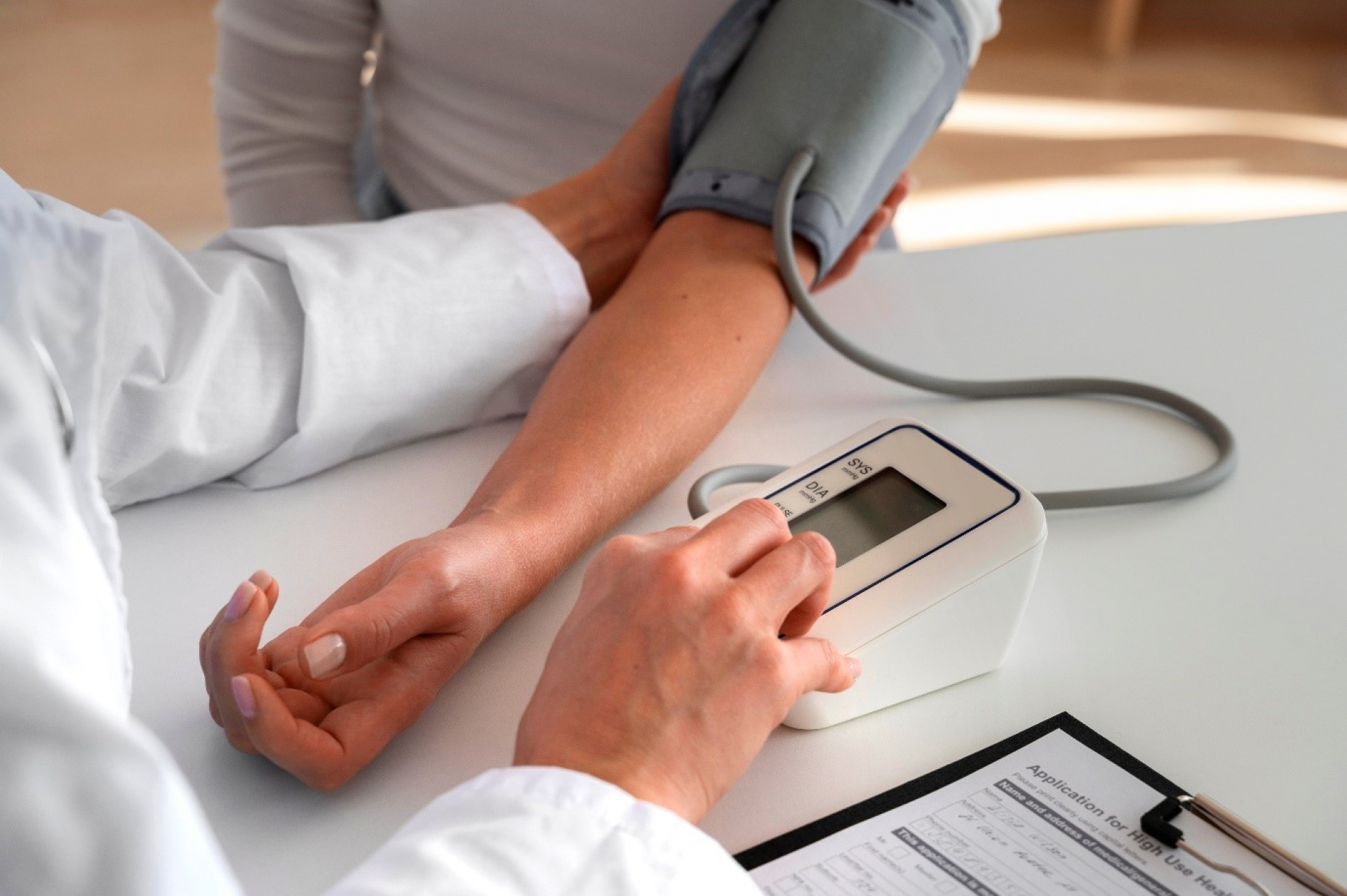What is high blood pressure?
Blood pressure (BP) refers to the pressure exerted by the blood on the walls of the arteries. This pressure is generated when the heart pumps blood into the blood vessels with each heartbeat, known as systolic blood pressure. Additionally, the size and elasticity of the artery walls impact blood pressure. Pressure is created within the arteries during each contraction and relaxation of the heart. During the heart's relaxation phase, the arteries maintain a lower resting tone to uphold some pressure in the artery, referred to as diastolic blood pressure.
High blood pressure is defined as the blood exerting too much force during heart contractions or relaxations within the arteries. The arteries may experience elevated resistance to blood flow, causing the heart to pump more harder in order to maintain proper circulation.
The increased pressure on the arteries can accelerate the accumulation of fatty plaques (atherosclerosis) within the arteries. Atherosclerosis is a key contributor to the occurrence of several diseases, like heart attacks and strokes.
Causes of high blood pressure
Elevated blood pressure may be caused due to:
- Being overweight
- Hereditary factors
- Consumption of a high-salt diet
- Limited physical activity
- Elevated stress levels
- Lack of adequate sleep
Who is at risk for high blood pressure?
The likelihood of being at risk for high blood pressure increases if you:
- Suffer from diabetes, gout, or kidney disease
- Are middle-aged or older
- Have a family history of high blood pressure
- Consume an excessive amount of high-salt foods
- Are overweight/obese
- Drink a lot of alcohol
- Take oral contraceptives
- Have depression
- Are pregnant
- Smoke cigarettes
- Use stimulant drugs
Signs and symptoms of high blood pressure
High blood pressure typically manifests without any apparent signs or symptoms, which is why it is often referred to as a "silent killer." Individuals could be living with high blood pressure for years without realizing it. Symptoms such as headaches, heart palpitations, or nosebleeds may arise when blood pressure reaches 180/120 mmHg or higher. Seeking prompt medical assistance is crucial when blood pressure levels are this elevated.
How is blood pressure measured?
A device known as a sphygmomanometer is used for measuring blood pressure.
- An inflatable pressure cuff is wrapped around the upper arm and connected to the sphygmomanometer. The cuff is inflated by the operator with air until the flow of blood in the main artery of the arm is interrupted.
- Following this, the pressure contained within the cuff is gradually released until it matches the systolic pressure present in the artery. This is indicated by the return of blood flow through the vessel, resulting in a 'thumping' sound. The systolic pressure is then measured and recorded.
- The pressure in the main artery of the arm decreases to meet the diastolic pressure, which is the lowest pressure point. When the thumping sound stops to be heard, this value is recorded as well.
- The operator may need to take several readings because individuals commonly experience heightened nervousness during the procedure, which can temporarily raise their blood pressure.
Understanding blood pressure readings
Two numbers are documented when measuring blood pressure:
- The number at the top indicates the systolic pressure. This is the pressure within the artery while the heart contracts and pushes blood throughout the body.
- The number at the bottom indicates the diastolic pressure. This is the pressure within the artery when the heart is in a state of rest and is being filled with blood.
The measurement of both systolic and diastolic pressures is recorded in millimeters of mercury (mm Hg). This represents the elevation of the mercury column within the blood pressure cuff, caused by the force exerted by the blood.
Blood pressure can be classified as normal, elevated, or categorized as stage 1 or stage 2 high blood pressure.
- The normal range for blood pressure is defined as having a systolic reading below 120 and a diastolic reading below 80 (120/80).
- An elevated blood pressure reading is defined by a systolic reading ranging from 120 to 129, and a diastolic reading below 80.
- Stage 1 high blood pressure is defined by systolic readings ranging from 130 to 139 and diastolic readings ranging from 80 to 89.
- Stage 2 high blood pressure is defined when systolic readings is 140 or above, or when the diastolic reading is 90 or above.
A hypertensive urgency refers to an even higher blood pressure, specifically with a systolic blood pressure of 180 or higher, a diastolic blood pressure exceeding 120, or both, in the absence of related symptoms. It is known as a hypertensive emergency when symptoms indicate damage to the kidneys, brain, or heart. In the case of a hypertensive urgency, immediate medication adjustment or evaluation in an emergency room may be necessary. However, in the case of a hypertensive emergency, immediate evaluation in an emergency room is required, and hospitalization will most likely be necessary.
A single high blood pressure reading does not always indicate a health problem. Your healthcare provider will typically require multiple blood pressure readings taken over a period of days or weeks in order to accurately diagnose high blood pressure and determine the appropriate course of treatment.
Understanding the complexities of high blood pressure is vital for effectively managing and minimizing its risks. Through lifestyle changes, adherence to medication, and regular monitoring, you can take proactive measures to improve your cardiovascular health. Collectively, these actions can help decrease the occurrence and effects of high blood pressure.


